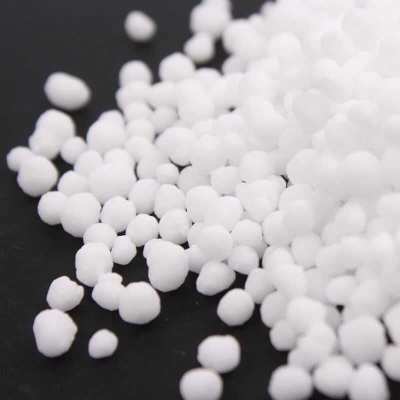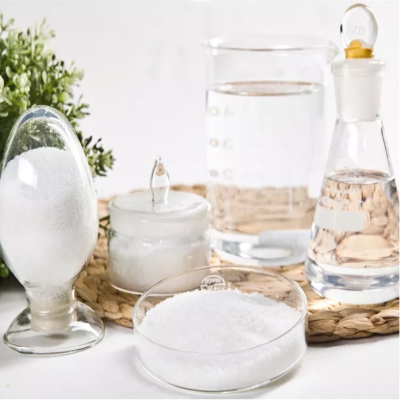-
Categories
-
Pharmaceutical Intermediates
-
Active Pharmaceutical Ingredients
-
Food Additives
- Industrial Coatings
- Agrochemicals
- Dyes and Pigments
- Surfactant
- Flavors and Fragrances
- Chemical Reagents
- Catalyst and Auxiliary
- Natural Products
- Inorganic Chemistry
-
Organic Chemistry
-
Biochemical Engineering
- Analytical Chemistry
- Cosmetic Ingredient
-
Pharmaceutical Intermediates
Promotion
ECHEMI Mall
Wholesale
Weekly Price
Exhibition
News
-
Trade Service
[Background Abstract] When designing hydrogels for biological applications, the mechanical properties should be carefully selected to match its precise application
.
However, traditional mechanical characterization methods (simple shear or compression/extension) usually ignore the multiaxiality of deformation in the body
.
A recent study by the team of Professor Paul HJ Kouwer of Radboud University emphasized that biopolymers and tissues do show complex responses to combined uniaxial strain and shear strain
.
The related paper titled Fibrous Hydrogels under Multi-Axial Deformation: Persistence Length as the Main Determinant of Compression Softening was published on Advanced Functional Materials
.
In this study, a synthetic but biomimetic fibrous hydrogel is used, which is based on polyisocyanates and forms a self-assembled network of branched semi-flexible chains, similar to actin, collagen and fibers The structural network of structural biopolymers such as proteins
.
Its comprehensive nature allows decoupling the key parameters of these networks and understanding their effects on the mechanical response under multiaxial deformation
.
It is found from experiments that the persistence length is a key parameter of the biological network, which can adjust the softening of the gel in the compressed state: the harder the polymer, the more the network softens in the compressed state
.
This research provides insights into organizational behavior, which may only be obtained from synthetic model systems, and can further guide the design of new synthetic biomimetic soft materials as adjustable non-biological extracellular matrix materials.
The demand is great
.
[See the analysis for the main picture] Figure 1 Axial strain will cause the structure and mechanical changes of the PIC network
.
a) Representation of the experimental device: The hydrogel is formed between the rheological plates and is surrounded by water to allow the solvent to flow
.
Axial strain εN is applied, and then a shear strain γ is applied to evaluate the mechanical response
.
b) The storage modulus G'of the PIC hydrogel (1 mg mL-1 in deionized water) as a function of the oscillatory shear strain of different εN
.
By convention, negative values of axial strain are used for compression and positive values are used for extension
.
G'is constant in the linear viscoelastic (LVE) mechanism and increases at higher strains
.
c) When the network is compressed or expanded, the network segment will bend/bend (blue) or stretch (red), thereby changing the linear and non-linear mechanical properties
.
Figure 2 The relationship between storage modulus and concentration of PIC gel under axial strain
.
a) Platform modulus (Gε) as a function of axial strain (εN)
.
At all concentrations, PIC hydrogels showed compression softening and tensile hardening
.
b) By normalizing Gε with c2.
3, all data are folded into a curve
.
c, d) For nonlinear mechanical parameters with a concentration of 0.
7–1.
5 mg mL-1, the hardening exponent m(c); the critical strain γc(d) changes with extension and increases with compression
.
It is difficult to record the strain stiffness test performed under the axial compression of the hardest hydrogel
.
Figure 3 The storage modulus of PIC hydrogel under axial deformation is a function of afterglow length and profile length
.
a) Due to the addition of the same direction (NaH2PO4) or chaotropic (NaI) salt, the relative hardening or softening lasting length of the PIC gel is lp
.
In particular, the compression response is affected by lp
.
b) The relative degree of hardening or softening of the PIC gel is related to the profile length of the polymer forming the bundle LC.
Similarly, only in the compression, the difference between the samples is observed
.
The data shown is the average of 2 or 3 samples, all with ±SD
.
Figure 4 Mechanical response in two directions during axial deformation
.
a) Storage modulus (Gε) and axial stress σN as a function of axial strain
.
Both Gε and σN increase linearly with extension, while compression has a small change
.
Positive σN means that the network pulls the upper board down
.
Each graph shown is the average of three independent samples
.
b–d) The storage modulus of different axial strains in tension and compression (Gε-Gε=0) with respect to the resulting normal stress σN (all normalized to Gε=0).
This is for The (b), polymer concentration (c) and polymer persistence length (d) determined for gels with different polymer lengths were measured in three separate samples
.
Please note that soft materials do not work well
.
The linear correlation is independent of contour length (b), concentration (c) and persistence length (d)
.
References: doi.
org/10.
1002/adfm.
202010527 Copyright statement: "Polymer Materials Science" is a public account created by a professional doctor (post), which aims to share and exchange research progress in the fields of polymer materials science.
.
The above only represents the author's personal views
.
If there is any infringement or improper citation, please contact the author for correction
.
For commercial reprinting or submission, please contact the editor in the background
.
Thank you for your attention!
.
However, traditional mechanical characterization methods (simple shear or compression/extension) usually ignore the multiaxiality of deformation in the body
.
A recent study by the team of Professor Paul HJ Kouwer of Radboud University emphasized that biopolymers and tissues do show complex responses to combined uniaxial strain and shear strain
.
The related paper titled Fibrous Hydrogels under Multi-Axial Deformation: Persistence Length as the Main Determinant of Compression Softening was published on Advanced Functional Materials
.
In this study, a synthetic but biomimetic fibrous hydrogel is used, which is based on polyisocyanates and forms a self-assembled network of branched semi-flexible chains, similar to actin, collagen and fibers The structural network of structural biopolymers such as proteins
.
Its comprehensive nature allows decoupling the key parameters of these networks and understanding their effects on the mechanical response under multiaxial deformation
.
It is found from experiments that the persistence length is a key parameter of the biological network, which can adjust the softening of the gel in the compressed state: the harder the polymer, the more the network softens in the compressed state
.
This research provides insights into organizational behavior, which may only be obtained from synthetic model systems, and can further guide the design of new synthetic biomimetic soft materials as adjustable non-biological extracellular matrix materials.
The demand is great
.
[See the analysis for the main picture] Figure 1 Axial strain will cause the structure and mechanical changes of the PIC network
.
a) Representation of the experimental device: The hydrogel is formed between the rheological plates and is surrounded by water to allow the solvent to flow
.
Axial strain εN is applied, and then a shear strain γ is applied to evaluate the mechanical response
.
b) The storage modulus G'of the PIC hydrogel (1 mg mL-1 in deionized water) as a function of the oscillatory shear strain of different εN
.
By convention, negative values of axial strain are used for compression and positive values are used for extension
.
G'is constant in the linear viscoelastic (LVE) mechanism and increases at higher strains
.
c) When the network is compressed or expanded, the network segment will bend/bend (blue) or stretch (red), thereby changing the linear and non-linear mechanical properties
.
Figure 2 The relationship between storage modulus and concentration of PIC gel under axial strain
.
a) Platform modulus (Gε) as a function of axial strain (εN)
.
At all concentrations, PIC hydrogels showed compression softening and tensile hardening
.
b) By normalizing Gε with c2.
3, all data are folded into a curve
.
c, d) For nonlinear mechanical parameters with a concentration of 0.
7–1.
5 mg mL-1, the hardening exponent m(c); the critical strain γc(d) changes with extension and increases with compression
.
It is difficult to record the strain stiffness test performed under the axial compression of the hardest hydrogel
.
Figure 3 The storage modulus of PIC hydrogel under axial deformation is a function of afterglow length and profile length
.
a) Due to the addition of the same direction (NaH2PO4) or chaotropic (NaI) salt, the relative hardening or softening lasting length of the PIC gel is lp
.
In particular, the compression response is affected by lp
.
b) The relative degree of hardening or softening of the PIC gel is related to the profile length of the polymer forming the bundle LC.
Similarly, only in the compression, the difference between the samples is observed
.
The data shown is the average of 2 or 3 samples, all with ±SD
.
Figure 4 Mechanical response in two directions during axial deformation
.
a) Storage modulus (Gε) and axial stress σN as a function of axial strain
.
Both Gε and σN increase linearly with extension, while compression has a small change
.
Positive σN means that the network pulls the upper board down
.
Each graph shown is the average of three independent samples
.
b–d) The storage modulus of different axial strains in tension and compression (Gε-Gε=0) with respect to the resulting normal stress σN (all normalized to Gε=0).
This is for The (b), polymer concentration (c) and polymer persistence length (d) determined for gels with different polymer lengths were measured in three separate samples
.
Please note that soft materials do not work well
.
The linear correlation is independent of contour length (b), concentration (c) and persistence length (d)
.
References: doi.
org/10.
1002/adfm.
202010527 Copyright statement: "Polymer Materials Science" is a public account created by a professional doctor (post), which aims to share and exchange research progress in the fields of polymer materials science.
.
The above only represents the author's personal views
.
If there is any infringement or improper citation, please contact the author for correction
.
For commercial reprinting or submission, please contact the editor in the background
.
Thank you for your attention!







